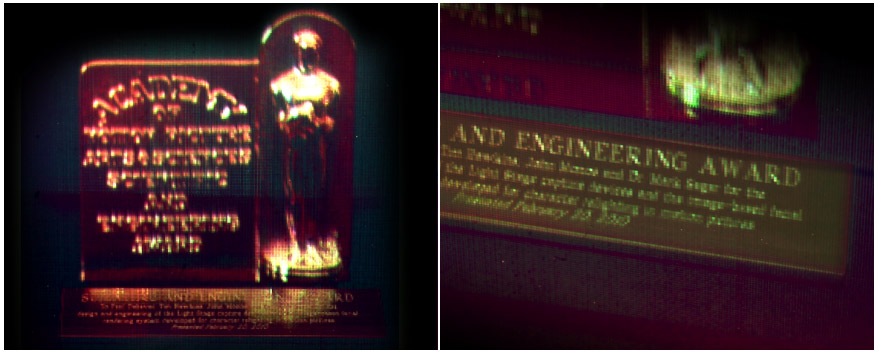
We present a technique to record and process a light field of an object in order to produce a printed holographic stereogram. We use a geometry correction process to maximize the depth of field and depth-dependent surface detail even when the array of viewpoints comprising the light field is coarsely sampled with respect to the angular resolution of the printed hologram. We capture the light field data of an object with a digital still camera attached to a 2D translation stage, and generate hogels (holographic elements) for printing by reprojecting the light field onto a photogrammetrically recovered model of the object and querying the relevant rays to be produced by the hologram with respect to this geometry. This results in a significantly clearer image of detail at different depths in the printed holographic stereogram.
Traditional holograpy involves the recording of an interference pattern of light onto holographic film which, when illuminated properly, reproduces the light field originally incident upon it during its exposure. Most commonly, a coherent reference beam formed by a defocussed laser source is split so that it illuminates both an object and, through an alternate path, the holographic film. These two coherent wavefronts produce interference patterns on the scale of the wavelength of light recorded by the high-resolution film. When the developed film is illuminated from the angle of the reference beam, it reflects the 4D light field of the object originally incident upon it. As such, a viewer can view the object from any angle and be presented with a faithful three-dimensional, autostereoscopic view of the object via the hologram. A drawback, however, is that the object appears to be illuminated by a point source of light – the original direction of the laser lighting it – rather than from a natural environment of indicent illumination. For highly polished objects, this can be a drawback, since the preferred studio lighting typically comes from a set of area light sources.